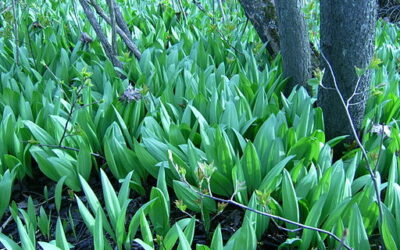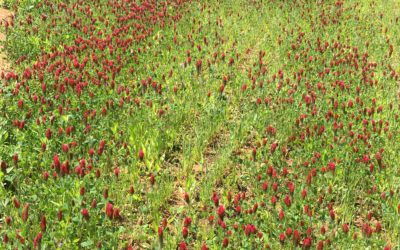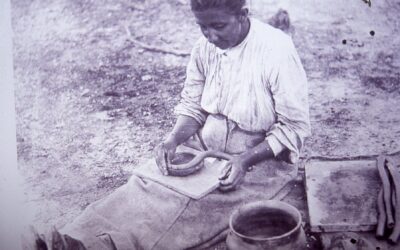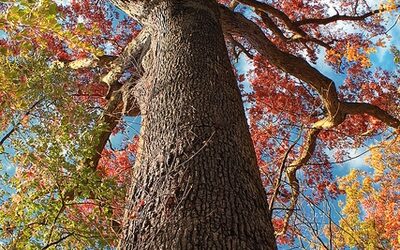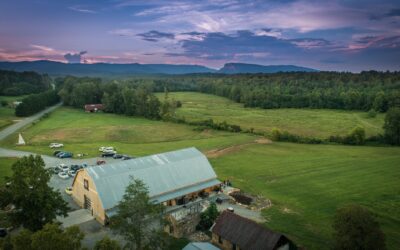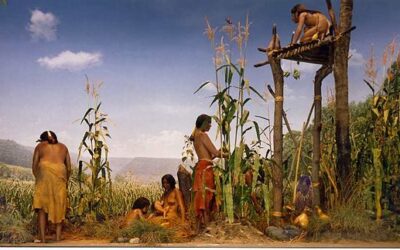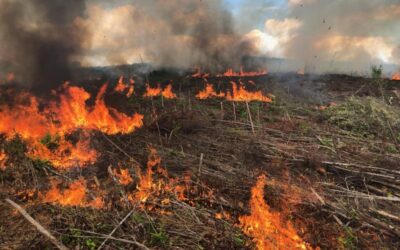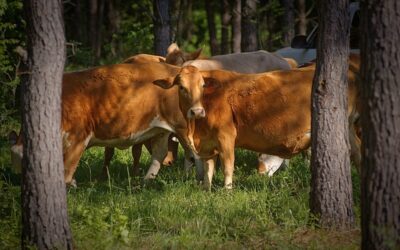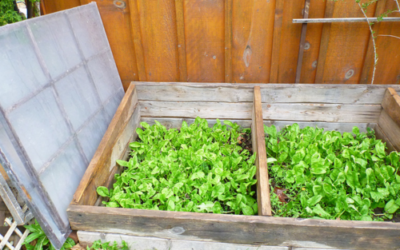Recent Posts
Traditional Foods of the Piedmont: Ramps
Traditional Foods of the Piedmont: Ramps Allium tricoccum PLANT TYPE: Wild perennial PREFERRED SETTING: Understory of temperate hardwood forests from Canada to Georgia LIGHT: Direct sunlight in early spring SOIL TYPE: Rich, loose, moist soil high in organic matter...
The Piedmont’s Next Chapter
This is the last in a series of five blogs that explore the 10,000 year history of human relationship to the land in the Piedmont region of North Carolina. Other blogs in this series include The Long Story of Catawba Run, Indigenous Cultures of the Piedmont, European...
Land as Material: Harvesting Clay in the Piedmont
Rachel Brown hand coils a piece of pottery in 1908. Rachel Brown is one of the links in the ancestral chain keeping Catawba pottery alive for future generations of potters. Image Credit: CC BY-NC-ND 4.0Walking into a local North Carolina art gallery, a small clay...
Industrialization Comes to the Piedmont
The stately White Oak is one of North Carolina's most familiar native trees, grows in a wide variety of habitats and can live as much as 600 years. White oaks support more than 500 different kinds of moths and butterflies (much more than any other native plant) and...
Cultivating Resilience at Fonta Flora Farm Brewery: Navigating Change in the Time of COVID
At Fonta Flora Brewery, two local brews - Paw Paw Gose and Carolina Custard - deliver the unique native flavor of paw paw in each sip. It was about four years ago that Foragable Community partnered with Fonta Flora to establish a native flavors garden at the...
Honoring Our Agricultural Heritage on Indigenous Peoples Day
Winter squash, corn, and beans are three common foods that have a history reaching back more than 6,000 years in North America. It was the Indigenous peoples of the Americas that first cultivated these three crops - known as the Three Sisters - and discovered that...
Ramping up Forest Regeneration with Drum Chop and Burn
The regeneration of forests at Catawba Run continues this year with the latest drum chop and burn treatment on 30 acres. The goal of the treatment was to clear away the dense thicket of stunted loblolly pine and other unmanaged regrowth of past clearcuts to make way...
Farming Forests, Reforesting Farms: Cultivating Resilience with Silvopasture
Imagine you’re standing in a forest in the Piedmont. Oak and pine trees of different heights sway above you as long grasses, deep purple violets, and the vibrant yellow flowers of golden ragwort brush your ankles. As you walk between the wide rows of trees, cattle and...
Start Planning Now to Savor the Season: Growing, Foraging, and Preserving Traditional Fall Foods
It’s late August and the shift from long hot summer days into that “fall feeling” is just over the horizon in the North Carolina Piedmont. As the mornings grow cooler and days grow shorter, it’s natural to begin thinking of fall harvests and preserving food for the...
Native Foodways of the Piedmont
The forests of the Piedmont and nearby Blue Ridge Mountains provided a rich landscape in which to forage and farm when the first known humans to inhabit the North Carolina Piedmont arrived about 10,000 years ago. Archeological evidence suggests that these...

